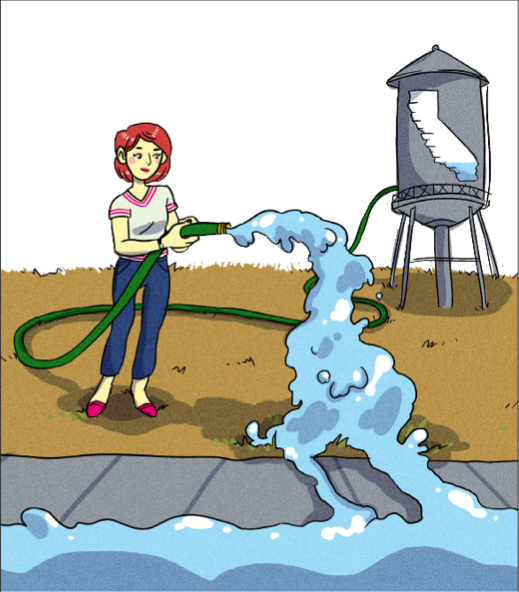Water wasters now subject to hefty fines up to $500
July 31, 2014
The California State Water Resources Control Board has recently instructed local governing agencies to begin issuing $500 fines each time any California resident or business is caught wasting water.
The brown coastal foothills of the Bay Area tell the tale of what many researchers, including Professor B. Lynn Ingram of the University of California, Berkeley, are calling the worst drought period the state has suffered in 500 years. The current drought has surpassed all of California’s official water records since 1850, the same year California petitioned the U.S. Congress for statehood.
The same day the Control Board approved the issuing of a $500 penalty, the agency also released a report that showed Governor Jerry Brown’s urging to cut water usage by 20 percent back in January 2014 brought about a 1 percent increase, not decrease, in drinking water used by Californians.
Accordingly, local agencies like Hayward’s Utilities and Environmental Services will have the task of enforcing the new fineable regulations which include washing or power washing streets, sidewalks, or driveways. Others include washing a car without a nozzle or watering lawns or other landscapes to the extent that water runoff onto the street is created.
Hayward’s city spokesman Frank Holland said these rules are “part of the municipal code already.” What has changed is the dollar amount attached to the fine. “You’ll first receive a written warning” but on the second complaint from a resident or neighbor “the new mandate allows for up to $500 in fines.”
“We need people to conserve wherever possible…it’s a serious issue,” stated Holland. The seriousness of the issue has energized the Santa Clara Valley Water District to hire up to ten new staff members to issue warnings to residents and businesses that fail to comply with the new enforcement.
The Control Board report cites much of the wasted water comes from poor maintenance and leaky water district infrastructure. In other words, the rise in California’s water usage may have little to do with how much individual Californians are wasting water but a lack of successful pipelines to bring water into homes.
Water districts in particular are cognizant that with less rainfall there is less product to supply. An individual cutting back on water usage simply means less revenue coming in which inevitably means rate hikes.
“Rent is so expensive,” said Ryutaro Matsuda, a junior majoring in computer science at California State University, East Bay. “I got notice from my land lady that water is too expensive so she has to raise rent.” Matsuda explained that water is included with his monthly rent payment. He hopes the level of snow in winter won’t negatively affect snowboarding season.
Residents of the city of Hayward can visit the Finance Department at City Hall to pick up their own “drought kit” for free which includes a lawn and shower aerator. “The city is here to help,” Holland reiterated. As a Hayward resident one can also receive rebates if they replace their water intense landscape with drought resistant lawn or plants.
“Brown is the New Green,” according to a California state campaign that urges individuals to forgo watering their lawns. “But you can’t snowboard on dirt,” said Matsuda with disappointment.

